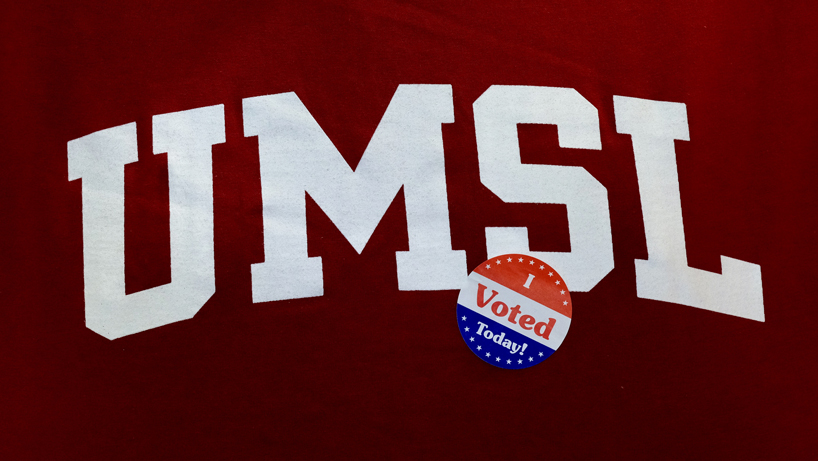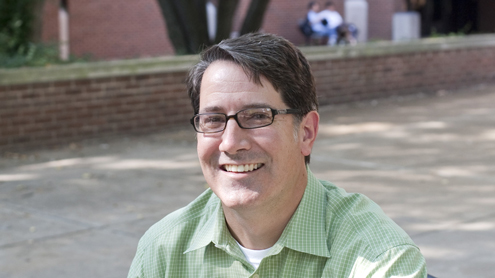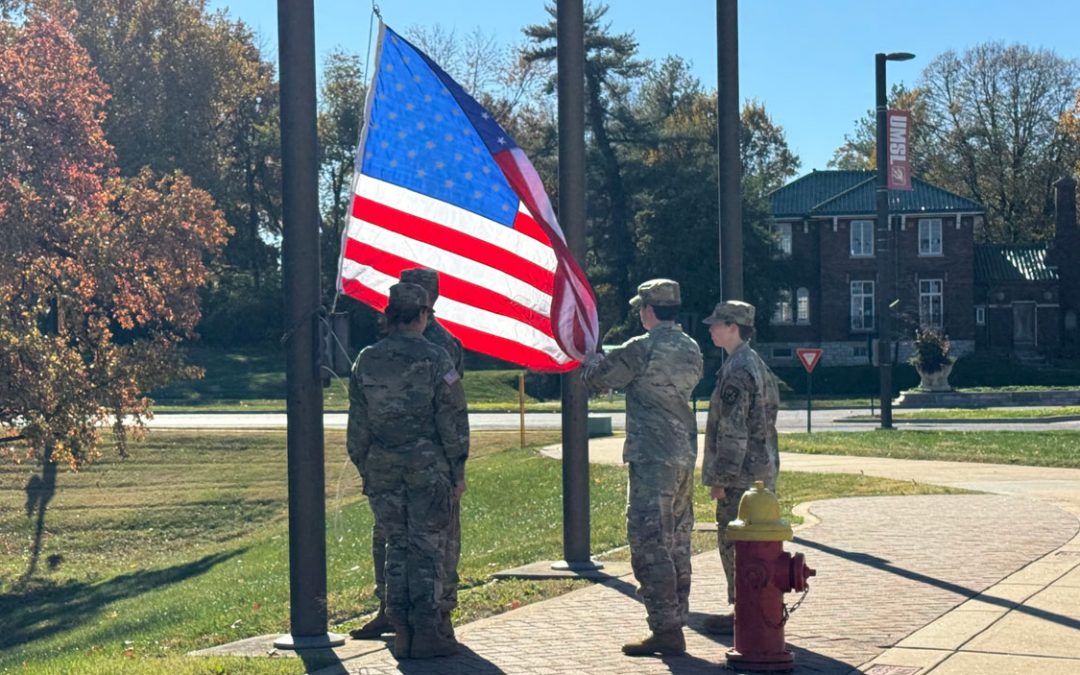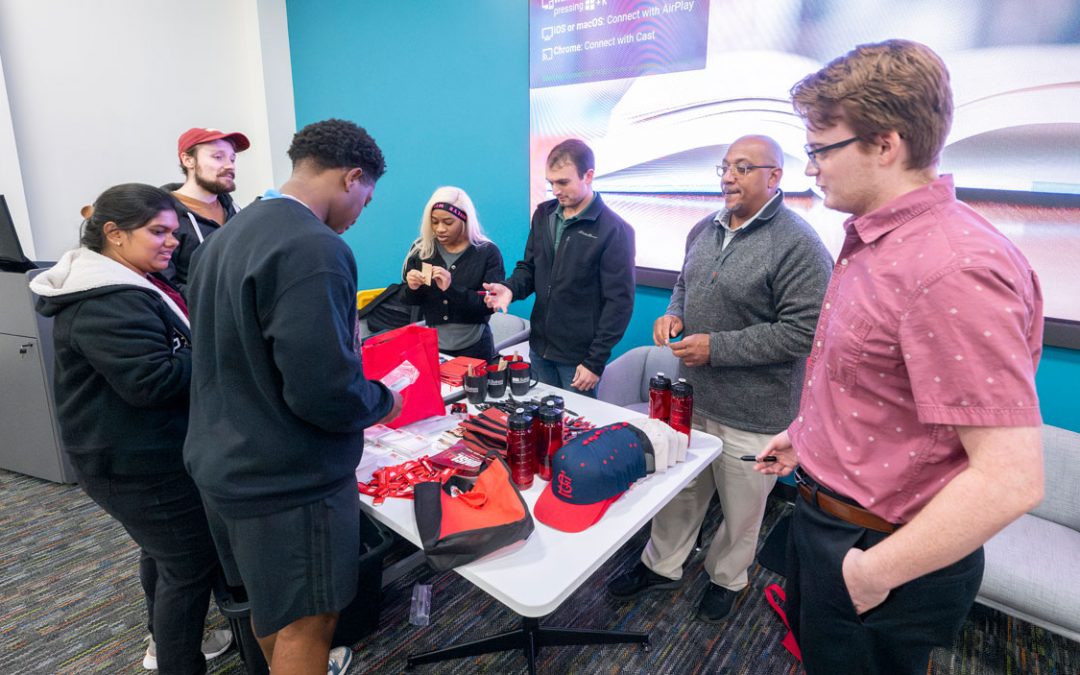
UMSL Department of Political Science faculty members were in high demand by state and national media outlets for their expertise before, during and after the Aug. 7 elections in Missouri. (Photo by August Jennewein)
After serving as St. Louis County prosecuting attorney for the past 28 years, incumbent Bob McCulloch was soundly defeated in the Democratic primary by Wesley Bell on Aug. 7.
Bell, a second-term Ferguson city councilman, defeated McCulloch by more than 13 percentage points, a surprising margin. Media outlets called upon University of Missouri–St. Louis political scientists for insight into how Bell pulled off such a landslide over McCulloch, who hadn’t been seriously challenged for the post in a while.
“It’s difficult when you’ve not had a tough contest in a long time to gear back up again,” UMSL Professor Emeritus of Political Science Terry Jones told the St. Louis Post-Dispatch. “Wesley Bell showed a tremendous ability to mobilize millennials and get them involved in the race, which enabled him to close much of the financial gap between himself and Bob McCulloch.”
UMSL Professor of Political Science David Kimball also pointed to the shooting of Michael Brown and its aftermath as reasons why Bell was able to garner significant support. A St. Louis County grand jury declined to indict Darren Wilson, the police officer who shot and killed the 18-year-old Brown in 2014, and many protestors tied McCulloch to that decision.
“I think the Ferguson events certainly had something to do with this,” Kimball told the Associated Press, in a story that was picked up by ABC News. “Certainly, that case got a lot of attention and generated a lot of criticism of McCulloch, so I’ve got to believe that was a factor.”
Media outlets sought the expertise of UMSL political scientists on a number of topics surrounding the Aug. 7 elections in Missouri.
Jones also spoke with the Post-Dispatch about the situation facing incumbent St. Louis County Executive Steve Stenger, who appears to have won a close race in the Democratic primary, even though challenger Mark Mantovani has not yet conceded.
Stenger (BSBA 1993) had a contentious relationship with the St. Louis County Council during his first term in charge and his only consistent ally, Pat Dolan, was defeated in the Democratic primary by challenger Lisa Clancy (BSW 2008), who serves as the associate director of the Public Policy Research Center at UMSL.
“It’s going to be a very difficult four years for the county executive unless he develops some support on the county council,” Jones told the Post-Dispatch. “The structure of the county charter puts a significant amount of authority in the executive branch and very little in the legislature. It’s difficult for a part-time legislature to effectively take on a full-time executive. On the other hand, if it’s all of them, not just one or two, it’s going to be a challenge for County Executive Stenger.”
On election night, Associate Teaching Professor Anita Manion served as an in-studio analyst for KSDK News Channel 5 in St. Louis, breaking down results as they filtered in throughout the evening, including the early returns on the statewide referendum on Proposition A, the proposed “right to work” amendment to the state constitution.
“This is being very closely watched,” Manion said on the air as the first results were coming in. “We’ve seen a tide of ‘right to work’ legislation: Missouri is the 28th state to pass it. Ohio is actually the only one, in 2011, where the voters overturned that legislation, and that’s what opponents are hoping happens in Missouri tonight. It will be interesting, too, to see how the Prop A vote influences the other elections, too.”
Before the Aug. 7 elections, Jones also provided analysis of the District 1 U.S. House of Representatives race, in which incumbent Lacy Clay won the Democratic nomination, to the Associated Press in a story that ran in such outlets as ABC News and the Minneapolis Star Tribune.
Kimball, too, broke down the looming U.S. Senate showdown between Democratic incumbent Claire McCaskill and Republican Josh Hawley for the Associated Press, in a story that ran in the Washington Post, among other outlets.
And Curators’ Teaching Professor of Political Science Dave Robertson lent his expertise on Prop A to the Kansas City Star, as well as outlining in the Springfield News-Leader how the strong voting turnout among the labor community in opposition to the measure helped sway the Democratic primary for U.S. House District 7 in Southwest Missouri.
Before the vote, Robertson presciently pointed out to the Star the importance that the margin of the Prop A vote will have for any potential future efforts to make Missouri a “right to work” state.
Missouri voters came out against Prop A by a margin of 67.5-32.5 percent.
“A right-to-work bill can just be passed again in the next legislature,” Robertson told the Star in advance of the vote, “but the higher the margin, the more reluctant members of the legislature are going to be to try again.”


















